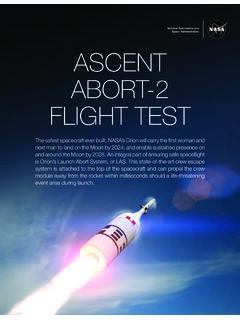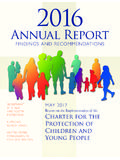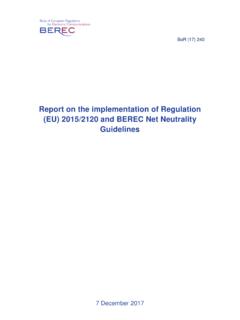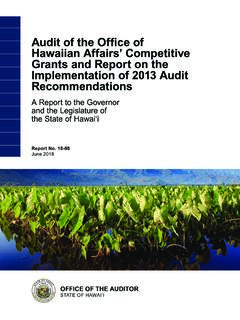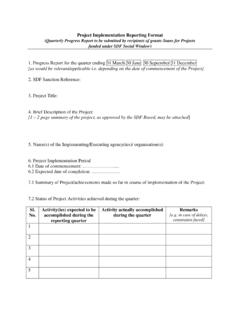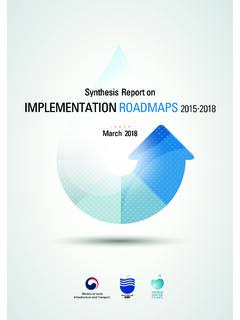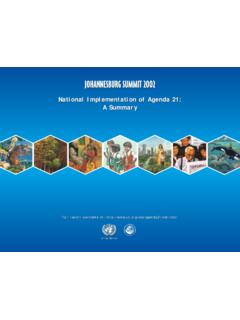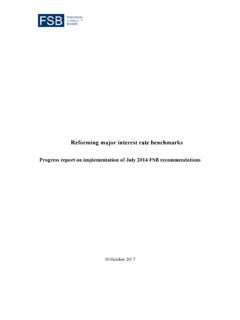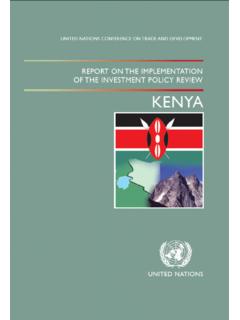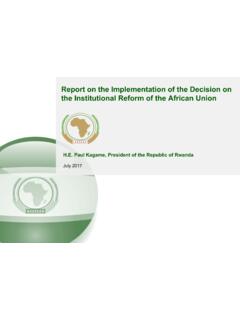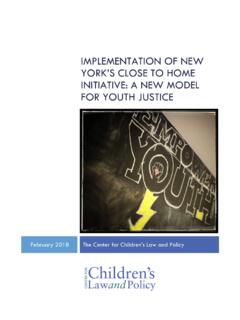Transcription of A Journey to Inspire, Innovate, and Discover
1 report of the President s Commission on implementation of United States Space Exploration PolicyA Journey to Inspire, Innovate, and Discover June 2004 report of the President s Commission on implementation of United States Space Exploration PolicyMoon, Mars and Beyond ..June 2004A Journey to Inspire, Innovate, and Discover report of the President s Commission on implementation of United States Space Exploration Policy2 Transmittal LetterJune 4, 2004 The Honorable George W. BushPresident of the United StatesThe White HouseWashington, 20500 Dear Mr. President:On January 14, 2004, you announced a new vision for the United States civil space program basedupon exploration of the Moon, Mars, and beyond. The Executive Order you signed on January 27,2004, created a Commission to examine and make recommendations on implementing this newvision and asked the Commission to submit its report 120 days after its first accordance with your direction, enclosed is the Commission s final report , A Journey to Inspire, Innovate, and Commission sought extensive input for our deliberations, from within the government anddirectly from the public in the United States and abroad.
2 We held five televised public hearings, meet-ing in: Washington, ; Dayton, Ohio; Atlanta, Georgia; San Francisco, California; and New YorkCity. We heard public testimony from 96 individuals representing academia, industry, media, teachers,students, entrepreneurs, astronauts, labor unions, state governments, federal government agencies,international space agencies, and professional associations. The Commission s web site received morethan 6 million hits and over 6,000 written inputs. Public comments strongly supported the new spacevision, by a 7-to-1 Commission fully supports your vision and finds that this Journey of exploration will sustainvital national objectives here on Earth. It will provide inspiration for our youth to enter technicalfields, generate economic benefit to our nation through the creation of additional technical jobs,improve the competitiveness of our industrial base in the world marketplace, provide clear recogni-tion of America s leadership, and improve prosperity and the quality of life for all Americans.
3 We conclude that fundamental changes must take place in how the nation approaches space explo-ration and manages the vision for success. This national effort calls for a transformation of NASA,building a robust international space industry, a discovery-based science agenda, and educational ini-tiatives to support youth and teachers inspired by the vision. Sincerely yours, E. C. Pete Aldridge, C. Pete Aldridge, S. FiorinaMichael P. JacksonLaurie A. LeshinLester L. LylesPaul D. SpudisNeil deGrasse TysonRobert S. WalkerMaria T. ZuberA Journey to Inspire, Innovate, and Discover3 CommissionersA Journey to Inspire, Innovate, and Discover55 ContentsTRANSMITTALLETTER .. 2 EXECUTIVESUMMARY .. 6 SECTIONIINTRODUCTION: THESPACEEXPLORATIONVISION .. 10A. Overview of the Space Exploration Vision .. 10B. The Commission .. 10C. Why Go? .. 11D. Three Imperatives for Success .. 13E. Outline of What Follows .. 16 SECTIONII ORGANIZING GOVERNMENT FORSUCCESS.
4 17A. National Vision .. 17B. Transforming NASA .. 19C. Enabling Technologies .. 27 SECTIONIII BUILDING AROBUSTSPACEINDUSTRY .. 31A. Technology Transfer .. 31B. Encouraging Commercial Activities .. 32C. International Participation .. 34 SECTIONIV EXPLORATION ANDSCIENCEAGENDA .. 36A. Science Research Agenda .. 36B. Criteria For the Selection of Future Destinations .. 39 SECTIONVINSPIRINGCURRENT ANDFUTUREGENERATIONS .. 41A. Formal Education Opportunities .. 42B. New University Partnerships to Train the Next Generation of Explorers .. 42C. Public Engagement .. 44 SECTIONVI CONCLUDINGCOMMENTS .. 47 Appendix A Executive Order Creating the Commission .. 48 Appendix B Commission Charter ..50 Appendix C Renewed Spirit of Discovery: The President s Vision for Space Exploration .. 51 Appendix D Member Biographies .. 54 Appendix E Commission Staff .. 56 Appendix F NASA Budget .. 57 Appendix G Hearings and Trips.
5 58 Appendix H Witnesses .. 59 Appendix I Legal Compliance .. 60 report of the President s Commission on implementation of United States Space Exploration PolicyExecutive SummaryOn January 14, 2004, President George W. Bush announced a new vision for America s civil spaceprogram that calls for human and robotic missions to the Moon, Mars, and beyond. This vision setforth goals of: returning the Space Shuttle safely to flight; completing the International SpaceStation (ISS); phasing out the Space Shuttle when the ISS is complete (about 2010); sending arobotic orbiter and lander to the Moon; sending a human expedition to the Moon as early as 2015,but no later than 2020; conducting robotic missions to Mars in preparation for a future human expe-dition; and conducting robotic exploration across the solar system. Such a focus for the Americanspace program has not existed since the Apollo era and establishes a much-needed direction and pur-pose for our national space discovery is the goal of space exploration, the Commission is certain that the benefits hereon Earth will make the Journey at least as important as the destination.
6 The long-term, ambitious space agenda advanced by the President for robotic and humanexploration will significantly help the United States protect its technological leadership, economic vitality, and ambitious path of exploration and the achievements madealong the way will inspire the nation s youth, yield scientific breakthroughs, create high technolo-gy jobs, improve our industrial competitiveness, demonstrate America s leadership, and improveprosperity and the quality of life for all Americans. To sustain this program over many Presidential Administrations and Congressional sessions, ourleaders must routinely explain and demonstrate the value, affordability, and credibility of the pro-gram to all Americans so that they accept ownership of it. The President has projected the annualresources available to NASA at roughly the same level as in the past, growing only slightly in thecoming years. Within these annual levels, the Journey will need to be managed within availableresources using a go as you can pay approach, which allows specific exploration goals to beadjusted as technology advances and periodic milestones are achieved.
7 Successful implementation of the national space exploration vision will require significant culturaland organizational changes in the federal government s approach to managing the effort, and boldtransformation initiatives must be undertaken. The Commission has developed the following find-ings and recommendations for a sustainable, affordable, and credible program: The space exploration vision must be managed as a significant national priority, ashared commitment of the President, Congress, and the American people. TheCommission recommends: The President establish a permanent Space Exploration Steering Council, reportingto the President, with representatives of all appropriate federal agencies, andchaired by the Vice President or such other senior White House executive that thePresident may designate. The council shall be empowered to develop policies andcoordinate work by its agencies to share technologies, facilities, and talent withNASA to support the national space exploration Journey to Inspire, Innovate, and Discover NASA s relationship to the private sector, its organizational structure, business cul-ture, and management processes all largely inherited from the Apollo era must bedecisively transformed to implement the new, multi-decadal space exploration Commission recommends: NASA recognize and implement a far larger presence of private industry in spaceoperations with the specific goal of allowing private industry to assume the primaryrole of providing services to NASA, and most immediately in accessing low-Earthorbit.
8 In NASA decisions, the preferred choice for operational activities must be com-petitively awarded contracts with private and non-profit organizations and NASA srole must be limited to only those areas where there is irrefutable demonstration thatonly government can perform the proposed activity; NASA be transformed to become more focused and effectively integrated to imple-ment the national space exploration vision, with a structure that affixes clearauthority and accountability; NASA Centers be reconfigured as Federally Funded Research and DevelopmentCenters to enable innovation, to work effectively with the private sector, and to stim-ulate economic development. The Commission recognizes that certain specific func-tions should remain under federal management within a reconfigured Center; the Administration and Congress work with NASA to create 3 new NASA organizations: a technical advisory board that would give the Administrator and NASA leader-ship independent and responsive advice on technology and risk mitigation plans; an independent cost estimating organization to ensure cost realism and accuracy; and a research and technology organization that sponsors high risk/high payofftechnology advancement while tolerating periodic failures; and NASA adopt proven personnel and management reforms to implement the nation-al space exploration vision, to include: use of system-of-systems approach; policies of spiral, evolutionary development; reliance upon lead systems integrators; and independent technical and cost assessments.
9 The successful development of identified enabling technologies will be critical toattainment of exploration objectives within reasonable schedules and affordable Commission recommends: NASA immediately form special project teams for each enabling technology to: conduct initial assessments of these technologies; develop a roadmap that leads to mature technologies; integrate these technologies into the exploration architecture; and develop a plan for transition of appropriate technologies to the private long-term, ambitious space agenda advanced by the President for robotic and human exploration will significantly help the United States protect its technological leadership, economic vitality, and security. report of the President s Commission on implementation of United States Space Exploration Policy Sustaining the long-term exploration of the solar system requires a robust spaceindustry that will contribute to national economic growth, produce new productsthrough the creation of new knowledge, and lead the world in invention and innova-tion.
10 This space industry will become a national treasure. The Commission recom-mends: NASA aggressively use its contractual authority to reach broadly into the commer-cial and nonprofit communities to bring the best ideas, technologies, and manage-ment tools into the accomplishment of exploration goals; and Congress increase the potential for commercial opportunities related to the nation-al space exploration vision by providing incentives for entrepreneurial investmentin space, by creating significant monetary prizes for the accomplishment of spacemissions and/or technology developments and by assuring appropriate propertyrights for those who seek to develop space resources and infrastructure. 8A Journey to Inspire, Innovate, and Discover International talents and technologies will be of significant value in successfullyimplementing the space exploration vision, and tapping into the global marketplace isconsistent with our core value of using private sector resources to meet mission Commission recommends: NASA pursue international partnerships based upon an architecture that wouldencourage global investment in support of the vision.









